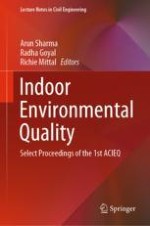2020 | OriginalPaper | Chapter
Examination of Particle Characteristics and Quantification of Emission Factors for Smoke Generated from a Popular Indian Incense Burnt in an Experimental Chamber
Authors : Anubha Goel, Radhika Mundra, Deepshikha Ola
Published in: Indoor Environmental Quality
Publisher: Springer Singapore
Activate our intelligent search to find suitable subject content or patents.
Select sections of text to find matching patents with Artificial Intelligence. powered by
Select sections of text to find additional relevant content using AI-assisted search. powered by
